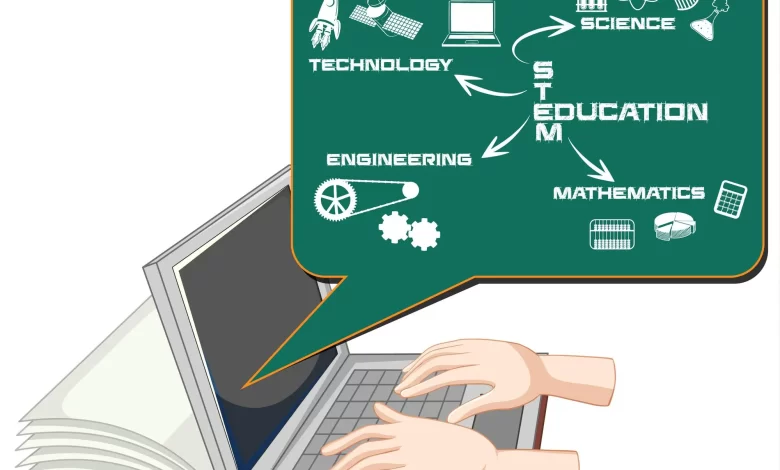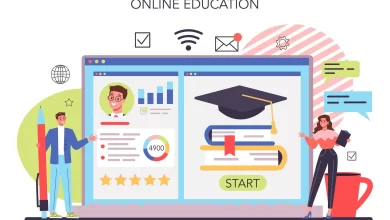What Would Education 4.0 Mean For Children And The Evolution Of Learning?

Industry 4.0, the fourth industrial revolution, is what Education 4.0 directly responds to for young people. A new era has begun in our world because of big technological changes. Getting to Industry 4.0 took a very long time, and the best and brightest minds worldwide.
In the 1960s, the use of fossil fuels, the creation of electronics, and the use of steam power all helped the economy grow. New technologies like artificial intelligence (AI) and digital transformation drive the fourth industrial revolution. As the financial system has become more digital, education has also changed.
The world is changing so quickly because of new ideas and technologies that it’s hard to keep up. For example, education is becoming increasingly digital, and curricula are always changing to meet the world’s needs. Education 4.0 is a way to prepare young folks for the future world. It is a result of the changes in technology.
Features of Industry 4.0
First, let’s speak that the World Economic Forum’s report says that 65% of the kids who are starting primary school now will work in positions that don’t exist yet. Industry 4.0 is making big changes to the job market, and the skills people will need in the future.
Education 4.0, which will assist the youth of tomorrow to have the skills they need, will have to deal with this need for new skills. Businesses, gov’t, and people must prepare for future abilities to take advantage of Industry 4.0’s opportunities and avoid problems.
Industry 4.0 is a new and advanced economic model that relies on intelligent, virtual, and digital success in large-scale industries. Businesses are having a hard time with this model. About the fourth industrial revolution in general, the most important things are:
⦁ Decentralization implies that machines work independently and that different parts of an organization do the same things.
⦁ Different systems can talk to one another and work well together if they are interoperable.
⦁ Virtualization: Virtual instances are different from the physical version, so they offer protection and start making training and testing simulations better.
⦁ Real-time response: Getting real-time sensor information to improve reaction times and strategy maintenance.
⦁ Modularity implies that modules may be easily connected and disconnected, allowing various products to be manufactured without replacing the assembly process.
Education 4.0 is a must if the new industry standards above are to work. For this to happen, young people need to learn how to use these technologies while they’re young. This will start to make the change easier for them.
What does 4.0 education mean for young people?
The education system needs a similar change to make the most of all that new technologies have to offer. But education 4.0 can not just meet the requirements of the business world; it should also consider what younger folks want. In today’s education system, there are many methods that new technologies can be used to make learning a lot better.
Flexibility
For instance, the COVID-19 pandemic did not stop education because innovative tools were used. We’re not talking about pupils losing a school year due to technology, yet we’ve witnessed how vital it is in the classroom.
Distance education
New technologies have made learning possible from afar, making it accessible to everyone. Just believe about how it might assist students who live in places that are far away or in the country. Thanks to distance learning, they can go to almost any school they would like, no matter where it is.
Customize learning
Also, this wider use of technology makes it feasible for students to study in a way that fits their needs better. They could take their time learning if they had tools like AI and cloud computing. These new learning methods have a greater impact on how well students perform and what they achieve.
New kinds of tests
In school, tests were one of the things that frightened students the most. Many say that exams are pointless because students shove them and then forget what they learned the next day. So, students won’t be able to do this when they get their first job. Traditional tests can test how well they know how things work, yet projects inside the field are the best way to see how well those who can apply what they know.
Project-based learning
Education 4.0 is based on projects that can make learning interesting and enjoyable. It doesn’t focus on theoretical knowledge but teaches students how to think critically. A few of these skills are making time, being organized, and working with other people effectively, all of which will assist them in having jobs in the future.
Finally, in an education 4.0 environment, the school loses its essential position as a source of information, which is nonetheless critical for a child’s growth. By going online, students can gain a huge amount of information from the convenience of their residences. This means you can learn about anything if you go on the Web and watch videos.
Conclusion
We live in a time when our ways of life and the world around us change quickly. There are many possibilities and difficulties in this period of rapid technological advancement. Innovations in technology and ideas can help solve many of the world’s biggest problems, like climate change.
If we will get in even more fresh ideas and exploit the ones we currently have, we need a future-focused education system. Education 4.0 is the right way to help our young people prepare for a constantly changing world. Not only will this benefit the business, but it’ll also keep people’s skills up-to-date, making it easier to find a job.



